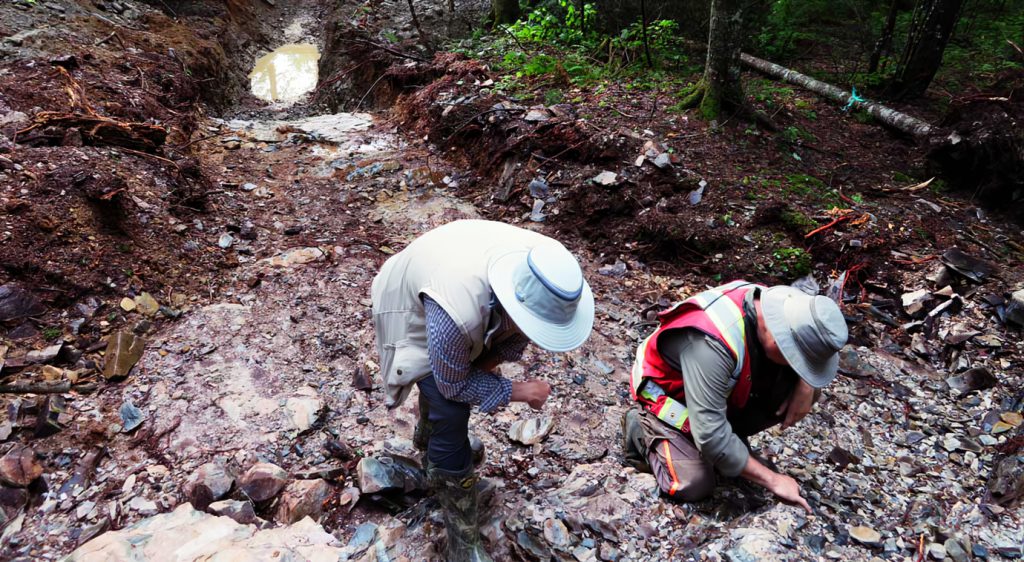Beauce Gold Fields completes geophysical survey at Beauce, Quebec

Beauce Gold Fields Inc. [TSXV: BGF] reported results of a geophysical survey conducted on its Beauce gold property, located in the Beauce region of southern Quebec. The survey successfully identified the signature of a crest of an anticline fold (Saddle Reef type) coinciding with the Grondin gold zone and extended the structure along strike for 8 km. Cumulative exploration data indicate that Saddle Reef-type formations are the likely bedrock sources of the company’s historical placer gold deposits.
Patrick Levasseur, president and CEO, stated, “The identification of this anticline axis over an 8-km strike is a major milestone in our exploration of the Beauce gold property. Those folds play a key role in the area’s gold mineralization and these results will guide our future drilling efforts. The successful detection of anomalies matching the known Grondin gold zone increases our confidence in uncovering additional mineralized targets.”
The company completed a two-phase induced polarization (IP) geophysical survey that successfully identified signatures aligning with the Grondin convex structure along its southwest to northeast strike over a distance of eight km. The survey, carried out by Geosig Inc., a Quebec-based geophysics firm, involved survey lines using dipole-dipole configurations to detect subsurface resistivity and chargeability. As the region is often covered with glacial deposits of varying thickness, the IP survey allowed for the detection of geological units, stockworks and sulphides presence within the rocks.
The first phase of the survey involved a grid of eight lines (L30E to L38E) totalling 4.2 km on the Grondin gold showing to characterize its geophysical signature. The Grondin gold mineralized outcrop and anticline structure (Saddle Reef type) were initially identified through drilling in 2023. The survey results correlated with drilled mineralized zones, confirming the presence of multiple high-chargeability and resistivity zones indicative stockworks and sulphide-rich rocks often associated with gold mineralization.
A 3-D (three-dimensional) model was created to determine the dip and direction of mineralized stockworks in the felsic lapilli tuff within the fold hinge.
The second phase involved cutting four additional lines to the northeast of the Grondin grid. These lines, spaced several hundred metres apart and located approximately eight km between Boulevard Industriel in Beauceville and Chemin de la Grande Ligne in Saint-Benjamin. Positioned along trails or roads to cross perpendicularly to anticline fold axes, these lines were designed to intersect the northeastern extension of the Grondin gold zone.
The results confirmed multiple high-chargeability-resistivity zones, indicative of stockwork-sulphide-rich rocks associated with gold mineralization. The field mapping survey also identified features from historical geological studies. Each survey line indicated IP anomalies corresponding to geological features of saddle reef type structure.
The Geosig survey identified the extension of the mineralized zone on the Grondin showing and generated several targets, which are now being investigated through field prospecting. The company completed 225 geochemical soil samples and collected 35 rock samples over the IP anomalies of the four northeastern lines (L53E, L65E, L76E and L109E) and line L30E.
Beauce Gold Fields is focused on exploring and developing the largest placer gold district in eastern North America. The Company’s objective is the trace old placer gold workings back to a bedrock source to uncover economic lode gold deposits. The company’s flagship property is the St-Simon-les-Mines gold project, site of Canada’s first gold rush that predates the Yukon Klondike. The Beauce region hosted some of the largest historical placer gold mines in Eastern North America that were active from 1860s to the 1960s.
